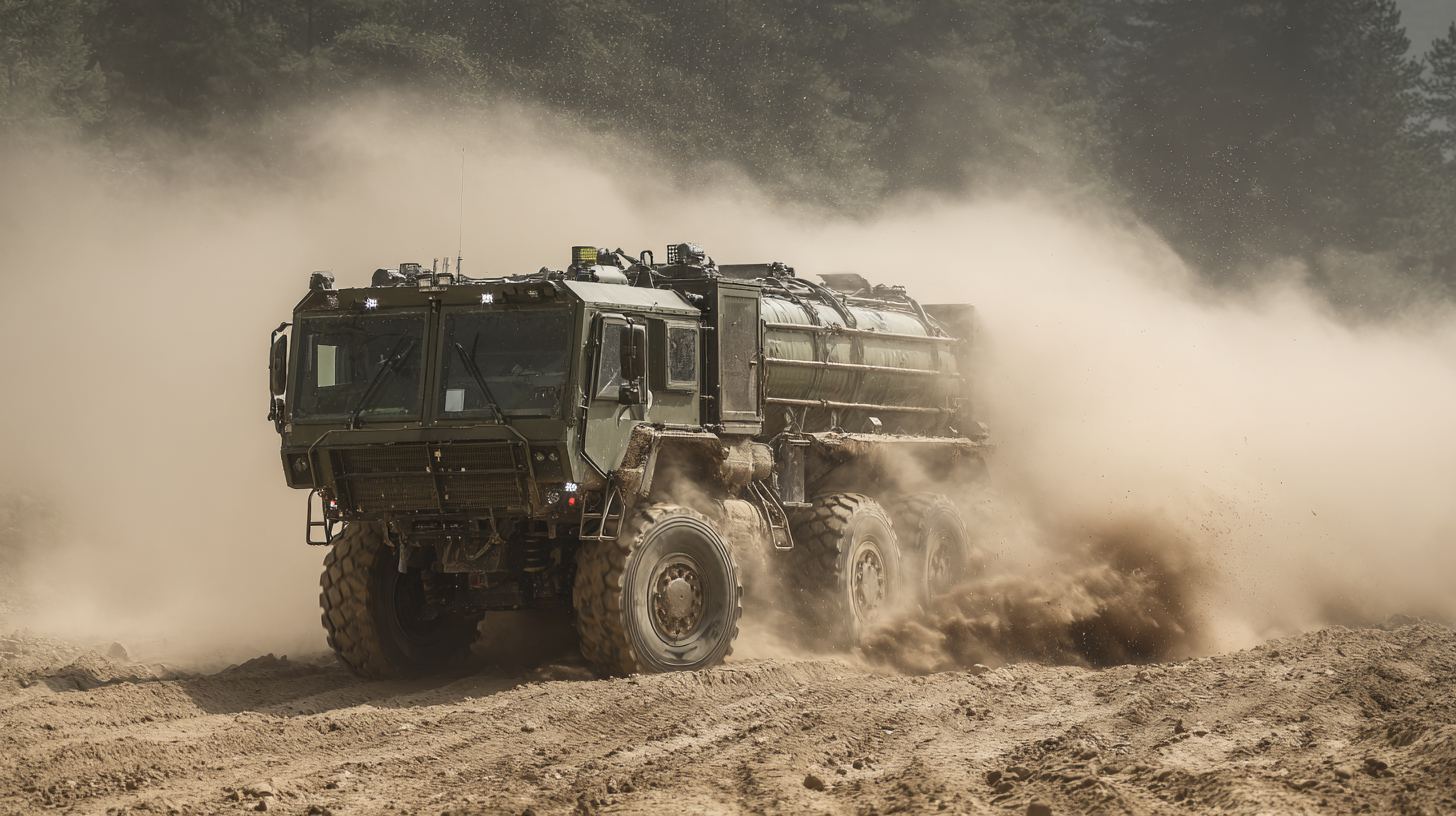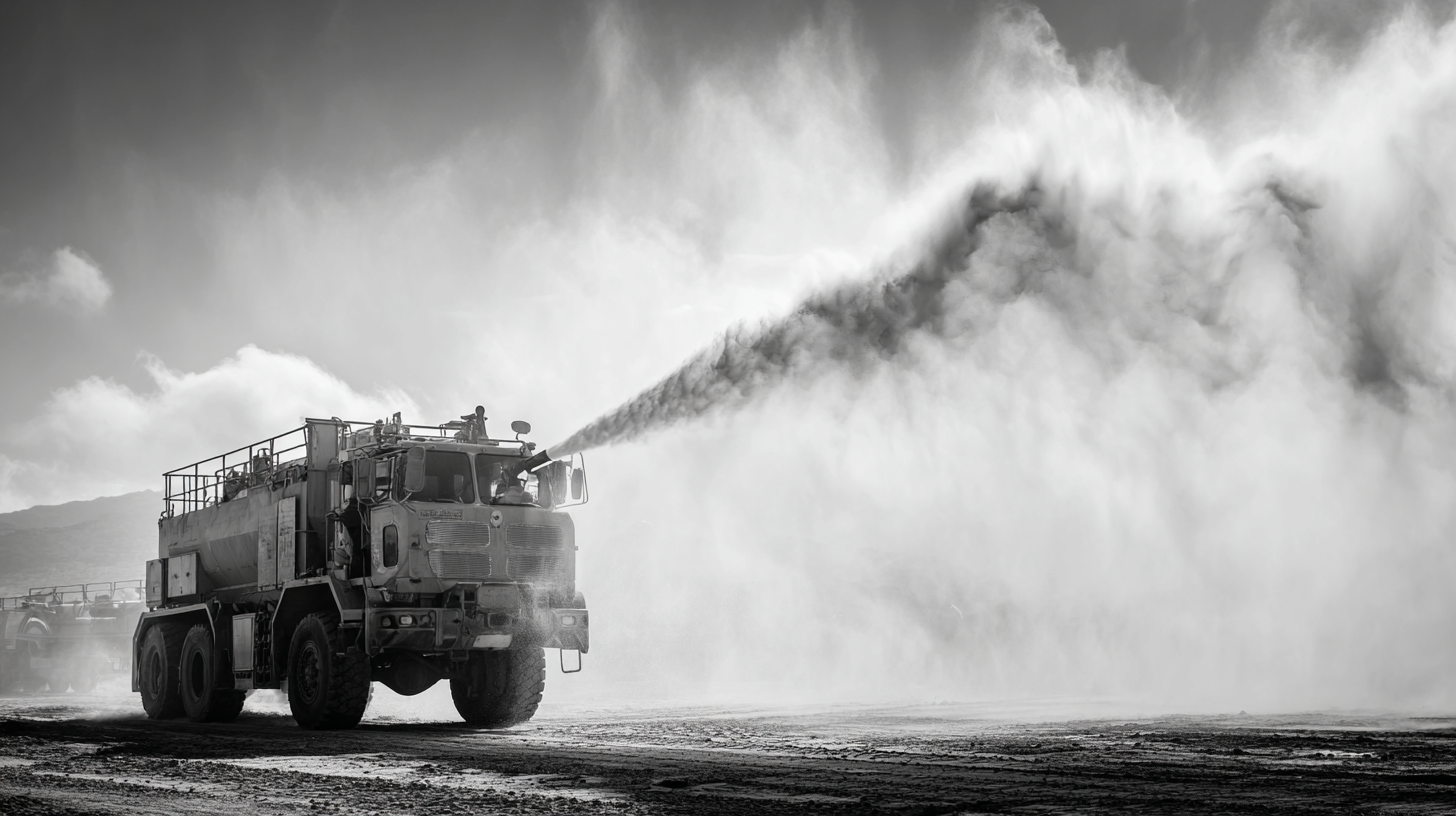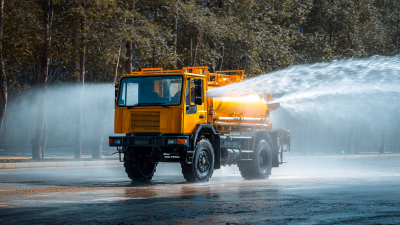Leave Your Message
-
Phone
-
E-mail
-
WhatsApp
In industries such as construction, mining, and agriculture, the effective management of dust is crucial not only for operational efficiency but also for compliance with health and safety regulations. According to a report by the U.S. Environmental Protection Agency, uncontrolled dust can lead to respiratory problems and other health issues for workers and nearby communities, emphasizing the need for robust dust control measures. One of the most effective tools for this purpose is the Dust-Suppression Water Cannon, which can significantly reduce airborne particulates when optimized correctly. Research indicates that properly calibrated water cannons can reduce dust emissions by up to 95%, delivering substantial benefits in worker safety and environmental protection. This blog will explore ways to enhance the performance of your Dust-Suppression Water Cannon for maximum efficiency, offering tips rooted in industry best practices and professional insights.

Dust-suppression water cannons are essential tools in various industries, particularly in construction and mining, where dust can pose serious health risks and operational challenges. Understanding the fundamental components of these systems is critical for optimizing their performance. At their core, dust-suppression water cannons utilize high-pressure water jets to create a mist that effectively binds to airborne particles. This not only significantly reduces dust levels but also enhances visibility for workers and machinery.
To maximize the efficiency of a dust-suppression water cannon, one must consider factors such as water flow rate, spray pattern, and nozzle design. The flow rate should be adjusted to ensure that enough water reaches the dust particles without over-saturating the area, which can create additional hazards. Additionally, selecting the correct nozzle type allows for better control over the spray pattern, ensuring optimal coverage of the dust-affected area. Regular maintenance and proper calibration of the cannon are also necessary to maintain effective performance. By understanding these basics, operators can enhance the effectiveness of their dust-suppression systems, contributing to a safer and more productive work environment.
 When optimizing a dust-suppression water cannon, understanding the key components that influence performance is crucial. The nozzle design plays a significant role, as it determines the spray pattern and droplet size of the water being dispersed. A well-designed nozzle will maximize coverage and minimize water usage, allowing for efficient dust suppression without wasting resources. Additionally, adjustable nozzles can provide versatility to effectively tackle varying dust conditions across different environments.
When optimizing a dust-suppression water cannon, understanding the key components that influence performance is crucial. The nozzle design plays a significant role, as it determines the spray pattern and droplet size of the water being dispersed. A well-designed nozzle will maximize coverage and minimize water usage, allowing for efficient dust suppression without wasting resources. Additionally, adjustable nozzles can provide versatility to effectively tackle varying dust conditions across different environments.
Another critical component is the pump system. The pump should match the output requirements of the cannon, ensuring adequate water pressure and flow rate. High-quality pumps ensure reliability and longevity, which are vital for continuous operation in dust-prone areas. Furthermore, incorporating variable speed drives can enhance energy efficiency, enabling operators to adjust water flow based on real-time dust levels, resulting in significant water conservation and cost savings.
Lastly, the control system should not be overlooked. A user-friendly interface paired with smart controls allows operators to manage the cannon's performance actively. Implementing sensors to monitor environmental conditions can enable automated adjustments, fostering a proactive approach to dust management. By focusing on these components, operators can significantly enhance the efficiency of their dust-suppression systems.
When it comes to optimizing your dust-suppression water cannon, selecting the right nozzle type is critical for achieving maximum efficiency. Different nozzle designs produce varying droplet sizes and spray patterns, which significantly affects how well the water can suppress dust particles. For instance, a wide-angle nozzle can create a gentle mist that covers large areas effectively, making it ideal for sweeping applications where you need to control airborne particulates over expansive surfaces. In contrast, a fine mist nozzle provides targeted coverage, delivering high-pressure jets of water that can penetrate dense dust clouds more effectively.

Additionally, adjusting the nozzle angle and distance from the dust source can further enhance performance. By experimenting with various configurations, operators can find the optimal settings that balance water usage with effective dust suppression. For construction sites or mining operations where dust is a significant concern, implementing the right nozzle technology can lead to considerable improvements in air quality while also ensuring compliance with environmental regulations. Adopting these strategies not only helps in managing dust but also promotes a safer working environment.
Maintaining a water cannon for dust suppression is crucial for ensuring long-term efficiency and effectiveness. According to a report by the Dust Control Research Institute, regular maintenance can increase a water cannon's efficiency by up to 30%. This improvement can dramatically enhance air quality on job sites, leading to safer working conditions and compliance with environmental regulations.
One essential tip for maximizing your water cannon's performance is to conduct routine inspections. Check the nozzles for wear and tear, as damaged nozzles can result in uneven water distribution, reducing dust control efficiency. Replacing worn nozzles can improve the spray pattern by approximately 25%, which has a direct impact on the volume of dust captured.
Additionally, keeping your water cannon clean is vital. Accumulation of minerals and debris can clog filters and impede water flow. Regularly flushing the system with clean water helps maintain optimal operational conditions. Industry standards recommend performing this cleaning every few weeks, particularly in areas with high mineral content in water, to ensure that the cannon operates at its best consistently.
Innovative technologies are transforming the landscape of dust suppression solutions, making them more efficient and environmentally friendly. One of the most significant advancements is the incorporation of atomization technology in dust-suppression water cannons. By breaking down water into finer droplets, these systems can cover a larger surface area and capture more dust particles, effectively reducing air pollution. This innovation not only enhances performance but also conserves water, as less fluid is required to achieve the desired results.
Another breakthrough is the integration of smart sensors and automated controls into dust-suppression systems. These technologies allow for real-time monitoring of dust levels, enabling the cannon to adjust its output based on the specific needs of the environment. This targeted approach ensures that resources are utilized efficiently, minimizing waste while effectively managing dust control. Furthermore, new materials and designs in water cannons improve durability and ease of maintenance, ensuring that operations remain seamless and cost-effective. As industries continue to adopt these modern solutions, the future of dust suppression will not only address environmental concerns but also enhance workplace safety and compliance with regulations.






